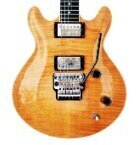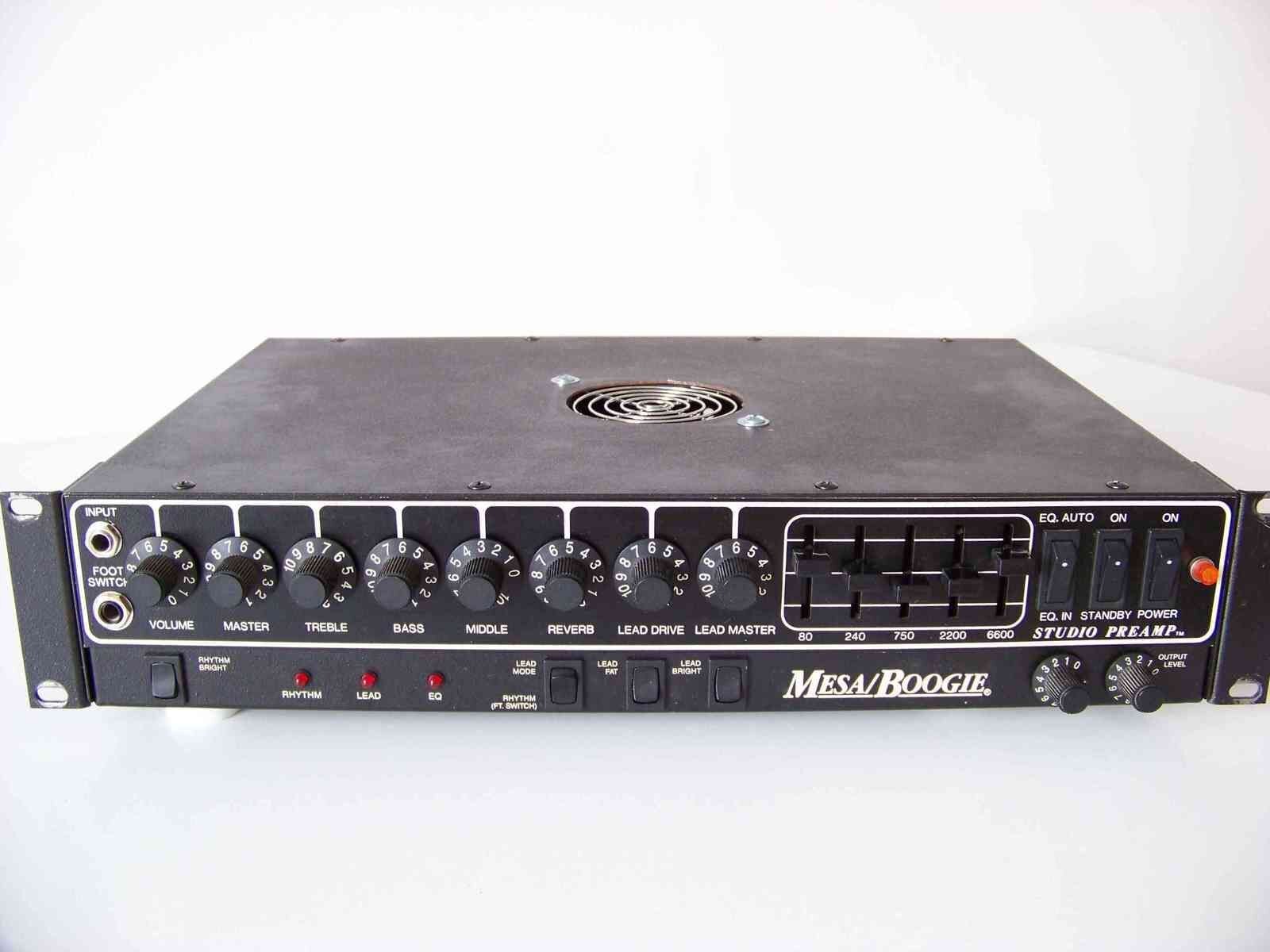-
Posts
494 -
Joined
-
Days Won
97
Content Type
Profiles
Forums
Events
Shop
Everything posted by Kiwi
-
Technically, if you have the right string gauge. You would need to find a piccolo bass set, maybe Rotosound still make them, and tune it to the top four strings of a guitar. But you'd probably find there was a bit of adjustment in terms of string tension and playing technique for the lower register, especially chords. You might even decide you just don't like the basic character of the plucked note. Piccolo basses tend to be quite twangy.
-
Maybe but I was going by the resonance of the instrument.
-
I tried a silent bass and the response across the strings was extremely uneven. Some strings were dead and others were OK, I'm not sure why but it didn't inspire confidence...and I'm a Yammiefan.
-
Just a thought but I'm wondering what you would recommend for the following 5 positions on a pickup selector switch on a HSH guitar: 1) Bridge humbucker - Satriani style rock (pull vol for coil split) 2) Bridge inner coil + middle - 80's strat quack 3) Bridge and Neck humbucker (pull vol for coil split tele twang) 4) Middle and neck outer coil - funky strumming 5) Neck humbucker - jazz archtop (pull vol for single coil strat kind of tone) I know it's a demanding and perhaps unrealistic request but I'm wondering how close you might be able to get.
-
What are you passionate about playing? I'm thinking that if you couldn't wait for the first opportunity to pick up the guitar and get into something you really enjoyed, you'd probably still be unstructured but practicing more often. Which leads to the next question about why structure is important if you can pick it up whenever the mood strikes? I haven't been playing much over the last 6 months and the other day I realised it was because I felt bad about the impact of practicing on others in the apartment. And I also felt a bit guilty about being self indulgent...despite working six days a week for no salary as I'm trying to get a business off the ground. So to address the first problem I bought a nice pair of AKG monitor headphones to plug into an old Zoom unit so I can practice silently. I'm hoping that'll also solve the second problem because noone will know when I'm practicing. I actually practiced last night for the first time in ages and for a solid couple of hours but it was mostly on bass. Mainly because bass is second nature and I wanted to make getting back into things easy. But I do have some learning goals for guitar including properly how to play: 1) Rosanna solo and outro - Steve Lukather 2) Heaven In My Hands - Alan Murphy 3) White Wedding - Steve Stevens 4) something by Def Leppard, maybe Hysteria or Pour Some Sugar 5) Surfing with the Alien or Satch Boogie - Joe Satriani (if I'm feeling particularly ambitious)
-

Deep Purple’s Longest Serving Guitarist Leaves Band.
Kiwi replied to ezbass's topic in General Discussion
He seems like a nice guy, I wish him all the best too. It's a tragic situation to be in. -

Celebrity endorsements and signature models
Kiwi replied to darkandrew's topic in General Discussion
Assuming that you mean companies are looking for up and coming musicians to help them show the market that they can stay relevant? There's an aspect of that too but it doesn't invalidate my point. They exist alongside each other. -
I came here thinking this would be a discussion about our ideal guitars. Still...I'm glad some members were able to help with info.
-
I think you'll be OK, at least until it breaks. Some of the cheaper Marshall amps with PCB based builds can be not worth worth the expense of repairing. Buy whatever cable you like but get one with neutrik or solderless jacks as they tend to break less often. Don't get sucked into the gold plating and oxygen free voodoo. The electrons don't care.
- 1 reply
-
- 1
-

-
I nearly bought one of these as my first gig-quality guitar. I found an old Chandler Custom strat instead though and it was cheaper.
-

Guthrie Govan with Tomasz Bura and Rouhangeze at Ronnie Scott's 31.05.2022
Kiwi replied to ConcertLondon's topic in Events
Top talent though, Mark Mondesir is a phenomenal drummer and Laurence Cottle is a bass maestro. -
Given the extra information in your reply Sea Chief, I was going to say that the hump in the photos is just down to the effect of string tension on the bracing. It happens in some guitars if the bracing isn't robust enough. That it's stable just means that the instrument has achieved a level of equilibrium without breaking. I have a cheap 12 string acoustic with the same issue but the problem with mine is that they used a 6 string body with 6 string bracing for a 12 string model. So the bracing isn't up to scratch (it should be X bracing rather than straight). To fix this I bought a special brace from Stew Mac for a hundred quid delivered which has reduced the hump a bit and it's been stable over the last 3 years.
-
I'm not really a luthier but I've made a couple of instruments and have 2-3 more in the pipeline but made from parts. All traditional acoustics have flat tops. The other kind you mention are archtops and typically (but not exclusively) are associated with jazz. Traditionally the difference was due to construction preferences. An arched top doesn't need bracing whereas a flat top does and the kind of bracing is down to preference and intended purpose for the instrument. A 12 string needs the strongest bracing while a nylon stringed instrument has lower requirements.
-

Soldano SLO100 + 4x12 Original in Purple
Kiwi replied to JohnPaulJones's topic in Amps and Cabs For Sale
This is a bucket list amp for some. -
See if you can find a Mooer Ocean Machine - it was Devin Townsend's signature pedal. It won't replace a Lexicon PCM70 but for gigging and practice it's better than most multi effects pedals.
-
Yeah its been playing on my mind as well. But Shugang are actually headquartered in the city where I live so even if things get desperate I'll still be able to buy something.
-
Heh, three and a half years later my Ibanez TSA5 combos are wearing out from poor quality components. So I've replaced them with a pair of cheap hand made 5F2 5w combos which are almost certain to last longer. Plus there's the matter of the three preamps (Mesa, Marshall and Carvin) and the Marshall 20/20 power amp and the Princeton Reverb II...none of which I've actually laid my hands on yet because they're being looked after in the UK by friends. I've come a long way from the Mesia (!) combo I started off with in 2007.
-
Blimey...you're right! Odd that we've never noticed it before now...and that it's part of the default theme. Perhaps something happened with one of the updates...? @Woodinblack
-
Torres have an agent in London, UK called Vyse.
-
Knife edge? Try here: https://ibanez.fandom.com/wiki/Ibanez_Wi The Ibanez S470 has a ball bearing trem. That would be my go to choice if your heart is set on Ibanez (and why wouldn't it, they represent fantastic value second hand.) I use a Yamaha MSG and the trem is a Rockin Magic Pro but I wouldn't recommend it on the grounds its quite stiff and the way in which the anchor bolts fit the base plate is surprisingly sloppy. I've had to shim mine to get better contact between the base plate and the guitar. For cam type trems, Kahlers are the only ones out there and they tend to be after market these days. Small operation so the trems are quite pricey but very few trems allow divebombing with just a finger. Also worth considering: The no longer made Wilkinson VS100C/CV. It's supposed to fit a standard two post (C) or 6 screw (CV) strat routing. The trem arm locks the base plate in place when not in use, allowing the benefit of a hard tail as well as trem. I have collected three or four over the years but again, they're not cheap because they're so hard to find. Trevor Wilkinson's daughter Kate was selling off NOS a few years back though which is where I snagged a couple. She is currently still listing a retrofit conversion kit on Reverb for the VS100N bridge that would do the same job. https://reverb.com/item/35360438-wilkinson-vs100n-cv-assembly-conversion-kit-chrome
-
Very good trems if you're looking for a knife edge design. I don't have one because I generally go for bearing or cam type designs, they're a little more durable.
-
If there's any ADA processing in any part of the signal chain after the feed is split, sometimes it can introduce a slight delay. But moving the combo to fix it suggests the issue might have been reflection off a wall or ceiling.
-
It depends on whether you just want something that you like more or you're tone hunting for a specific sound. For most guitarists, it comes down to choice of pickups and amp. The actual guitar itself is more about comfort, sustain and feel than tone. Amps basically come in four flavours - Marshall-ish, Fender-ish, Vox-ish and German-ish metal (Diezel etc). If you want aggressive distortion, go for something based on a Marshall (or even get one), if you like fat clean sounds and smooth overdrive then get a Fender inspired amp, if you are a metal player, you'll probably have to rely on pedals more than amps but get something with decent low end. If you like pristine cleans and sharp attack in the overdrive then Vox-inspired amps are worth looking into but most of the budget conscious amps are either Fender or Marshall based. Yammie Pacifica's are pretty decent instruments so maybe start out by tone hunting your fave player - what pickups do they use and how close can you get? Then figure out whether the amp swings towards Marshall or Fender in response. It should get you 75% of the way there for maybe six hundred quid or so.
-

Celebrity endorsements and signature models
Kiwi replied to darkandrew's topic in General Discussion
I think it's indicative of how the market works. Guitar heroes are idolised and emulated regardless of the actual logic behind the strategy. In the past, Fender have purchased companies just for their list of endorsees (i.e. SWR). -
I had a couple of narrow escapes with my main strat and Pedulla bass. The wall hangers are two piece where the cradle bayonet-fits the wall base. There were no installation instructions provided and I wasn't aware of how the cradle needs to be twisted ninety degrees so it's held in place. Both instruments fell from their hangers and landed on their strap buttons. The Pedulla's was bent and dented but easily repaired and replaced thank goodness but it left a hell of a dent in the teak floor. It was only at that point I inspected the hangers closely to try and understand why they didn't work when I discovered the bayonet arrangement. So I ended up redrilling the anchor holes into (mostly) concrete block for half of them and so far problem solved.


